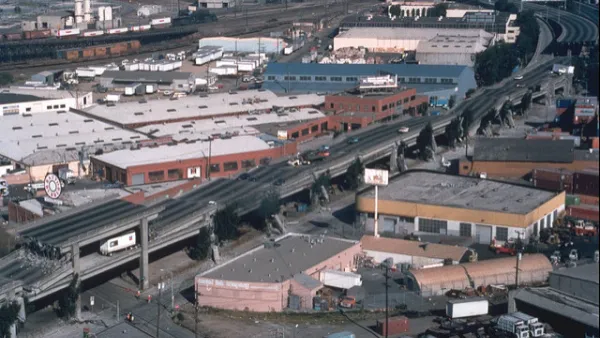Across Los Angeles, more than a thousand concrete buildings built before the mid-1970s are at risk of collapse during an earthquake. With the area overdue for a substantial shaker, time is running out to identify at-risk structures and save lives.
Since the Sylmar earthquake struck in 1971, Los Angeles officials have been aware of the dangers posed by concrete buildings. Though seismic codes were changed in the aftermath of that quake, owners of buildings built before 1971 have never been required to reinforce their structures. Furthermore, efforts to simply identify which buildings are at risk and label the hazardous ones have been blocked repeatedly.
According to Rong-Gong Lin II, Rosanna Xia and Doug Smith, researchers and reporters have catalogued more than a thousand older concrete buildings across Los Angeles County that could be at risk of collapse in a major earthquake. But without official action, it's up to building owners to investigate and invest in any seismic improvements—a cost many are unwilling to bear voluntarily.
"We know darn well that if a bunch of people die, there will be lots of stories, lots of reports, things will change," said Thomas Heaton, director of Caltech's Earthquake Engineering Research Laboratory. "But the question is, do we have to have lots of people die in order to make this change?"
FULL STORY: Concrete risks

Analysis: Cybertruck Fatality Rate Far Exceeds That of Ford Pinto
The Tesla Cybertruck was recalled seven times last year.

National Parks Layoffs Will Cause Communities to Lose Billions
Thousands of essential park workers were laid off this week, just before the busy spring break season.

Retro-silient?: America’s First “Eco-burb,” The Woodlands Turns 50
A master-planned community north of Houston offers lessons on green infrastructure and resilient design, but falls short of its founder’s lofty affordability and walkability goals.

Test News Post 1
This is a summary

Analysis: Cybertruck Fatality Rate Far Exceeds That of Ford Pinto
The Tesla Cybertruck was recalled seven times last year.

Test News Headline 46
Test for the image on the front page.
Urban Design for Planners 1: Software Tools
This six-course series explores essential urban design concepts using open source software and equips planners with the tools they need to participate fully in the urban design process.
Planning for Universal Design
Learn the tools for implementing Universal Design in planning regulations.
EMC Planning Group, Inc.
Planetizen
Planetizen
Mpact (formerly Rail~Volution)
Great Falls Development Authority, Inc.
HUDs Office of Policy Development and Research
NYU Wagner Graduate School of Public Service


























